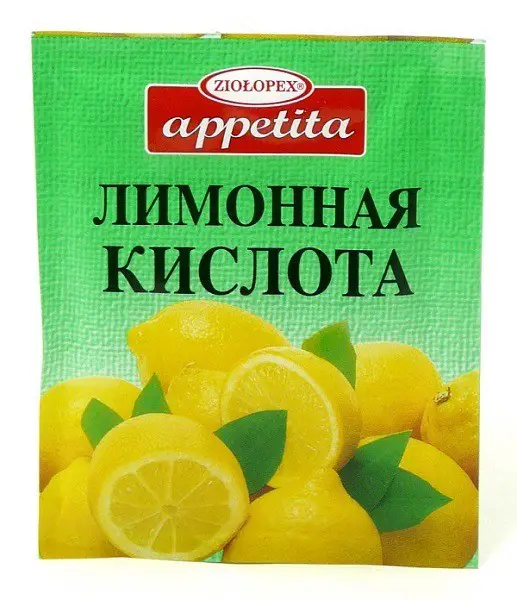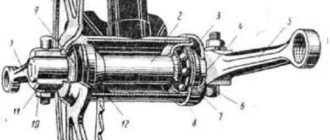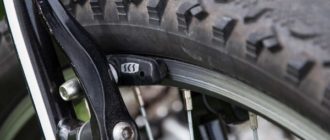Improper storage, improper care and improper use of your bike can cause your bike to become corroded over time. This is a very unpleasant phenomenon that affects almost every metal part of the bike, from the chain to the frame itself. And, if minor traces of rust on the chain can be removed by basic cleaning or simply changing the consumable part, then with the frame will have to tinker. Today we will tell you about how to remove rust from the bike, and what ways you can remove corrosion at home.
Preventive steps
To begin with, it is worth understanding when and for what reasons rust appears on the metal elements of the bicycle. Here you do not need to have seven heights in the forehead to compare the obvious things. Imagine that you got caught in the rain on your bike or the bike was standing alone under the cold drops while you were enjoying a cup of aromatic coffee in a cafe. When you get home the bike should be wiped down and dried thoroughly. If this is not done, over time the metal parts will begin to eat rust. It is clear that corrosion will not appear after the first soaking, but over a quite short period of time (2-3 months is enough) if you do not treat your bike properly, the characteristic reddish spots will appear on the metal parts. There are three main reasons why this occurs:
- Storing your bike in a damp place. Even in winter, it is undesirable to leave the bike on an unheated and unglazed balcony.
- Damage to the protective layer (separation of the nickel-plated or chrome plating that protects the metal from corrosion).
- Improper drying after water treatment.
Before we talk about how to remove rust from a bicycle, it is worth recalling that corrosion is a mixture of iron oxides and hydroxides. Rust comes directly from metal contact with water or air.
Which bicycle parts are most susceptible to rust
If you leave your bike on an unglazed balcony, the first rust marks will appear in 1-2 years. If the bike is left on the street, then just a few months later you can see the characteristic reddish marks on it. At a time when the bike chain rust will be very noticeable, on the frame can not find damage. The fact is that it is coated with a special substance that protects the metal from corrosion. Therefore, when you consider what you can remove rust from the bicycle at home, it is important to know that the first thing that breaks down is the metal parts of the pedals, the chain, spokes and wheel rims, the handlebar and its unpainted part.
A detailed inspection of the bicycle
In order not to puzzle over how to remove rust from the bike, you need to understand that any prolonged contact with moisture has appropriate consequences. Do not store your bike in a wet room, it must be wiped dry after washing and riding in the rain, and damaged nickel or chrome coating needs special attention. So when you pack your bike for the winter, check the metal parts carefully for corrosion each time. You should also do this before you open the new season.
Any serious job starts with serious preparation. Don’t rush into thinking about how you can remove rust from your bike. First, assess the degree of damage to the metal parts. This should be done according to the following algorithm:
- Determine the exact amount of rust spots.
- Assess the depth of the damage.
- Pay attention to traces of corrosion in hard-to-reach places.
Having assessed the situation by eye, you can decide what will be the best way to get rid of rust on the bike. It is worth saying at once that in most cases the problem can be eliminated on their own, without resorting to expensive means and the help of professional craftsmen.
Ways to remove rust from a bicycle
Interesting! Rust on the frame is the last stage. If traces of corrosion appeared on this part of the bike, then, most likely, the situation is highly neglected and traces of destruction can be found on the wheel rim, bike chain, sprockets, on metal joints and other parts.
All methods of removing corrosion from the bike can be conditionally divided into 3 categories:
- Electrode.
- With the help of means based on orthophosphoric acid.
- Folk ways (with the help of weak acids and compositions based on baking soda).
Depending on the degree of damage and the condition of the parts, you need and choose the most appropriate method. It is clear that in especially neglected cases, baking soda is likely to be powerless. To begin with, let us tell you how to remove rust from the handlebars of bicycles and other parts with the help of folk methods.
Folk methods
If you notice fresh traces of corrosion on your bike or chrome parts, you can use proven folk methods that effectively remove reddish traces from metal parts. Surprisingly, an ordinary raw potato does a pretty good job. You need to cut the tuber in half, generously sprinkle the cut with salt and give a good rub to the rust damaged place – it should come off. Some advise using regular ketchup or tomato paste to remove the corrosion: simply pour the damaged area and wait 5-7 minutes, then wash it off. The same method can be used cola. There are other folk methods, thanks to which you can remove rust from bicycle wheels, chains and other parts.
Citric acid
This is the so-called “home acid” method, which helps to remove traces of corrosion from nickel-plated and chrome-plated parts, as well as metal elements of the bicycle.
Important: All work must be done with rubber gloves on!
The solution, which will help to effectively deal with corrosion on metal elements, can be prepared in two variations:
- Citric acid itself or regular lemon juice.
- Vinegar and citric acid in a 1:1 ratio.
Pour acid on corroded parts and see stunning results – it does not work. First, you need to degrease the damaged areas, using, for example, acetone or solvent. Then take a sheet of sandpaper, put a few drops of acid on it and rub it gently into the rust. Then rinse with water and go over the treated area with a damp rag. Remember that the acid droplets left behind are as corrosive to the metal. All that remains is to dry the bike and take it out in the sun to air it out.
This method of cleaning is suitable for moderate damage. You can use citric acid to remove rust from wheel rims, nuts, handlebars, fenders, etc. To prevent further corrosion, the treated area should be nickel-plated or chrome-plated. If this is not possible, then lubricate with a special oil that protects the metal from rust.
Phosphoric acid
Important! Orthophosphoric acid is a toxic and flammable substance, so you need to work with it, observing safety precautions (gloves, respirator and goggles).
Orthophosphoric acid is widely used in industry. You can buy it in any store of goods for cars, motorcycles and bicycles. It is quite possible that you can also find it in a construction store. Please note that the substance is quite poisonous and dangerous, so you must work with the windows open, in a well-ventilated room and be sure to keep away from children and pets. Make sure that the acid does not get on your skin.
Orthophosphoric acid is a good way to deal with corrosion, which is quite severely corroded the metal. The principle of cleaning is about the same as with citric acid:
- Mechanically clean the affected area with a metal brush or sandpaper.
- In addition, degrease the surface with a soapy solution.
- Apply orthophosphoric acid and leave for several hours.
- Wash off any residue with a neutralizer (ratio: 48% alcohol, 50% water and 2% ammonia).
- Wash the treated area with a detergent.
- Wipe with a dry rag and dry in the fresh air.
Then all that remains is to take preventive measures for further rusting: what you can – nickel or chrome plating, what you can not – oiling. This method allows you to remove rust from the handlebars of the bike, its fenders, wheel rims and other areas.
Purchased remedies
You will not find a universal remedy. As a rule, chemical mixtures for rust removal are made on the basis of the same orthophosphoric acid with special additives. The purpose of the purchased preparation also depends on the latter. They are divided into:
- converters;
- primers;
- stabilizers.
For example, converters with manganese and zinc provide a metal alloying effect. Primers can remove rust from bicycle fenders and make a good base for further painting. And stabilizer modifiers are not a primer, but improve its properties and also effectively fight corrosion.
Only you decide which way to remove rust from bicycle parts. To begin with, you can try folk methods, and then move on to the “heavy artillery”. In especially neglected cases, it is wise to apply to a workshop, where they know exactly what can be done to the damaged metal and whether there is a sense of resuscitation measures.
Peculiarities of cleaning in hard-to-reach places
And now let’s talk about thorough cleaning, which is necessary in cases where the bike is corroded, as they say, “from and to.” Here it would be a good idea to completely disassemble the bike to the smallest detail, or partially, without removing the transmission.
The first thing to do is to clean the frame of the bike. Particular attention (apart from the obvious areas of damage) should be paid to the inner cavities of the seat tube, carriage and handlebar cups. Often traces of corrosion can be found on the handlebar and sliding mounting cone, along with the inside walls of the column. This is due to lack of lubrication and moisture entering the fork.
Transmission components – stars, metal pedal bases, and chain – are all cleaned separately from the bike. In any case, these parts will have to be removed.
Hard-to-reach places (e.g., chain, nuts, sprockets, etc.) are easier to soak in anti-corrosion solutions, taking all precautions and keeping to time limits. It is possible to remove rust from the nickel-plated surface of the bicycle with citric acid, if the degree of damage is insignificant. And remember that after cleaning, you should protect the metal part from further rust.
Conclusion
Preventive inspection of the bike for corrosion should be performed regularly: before sending the bike for the winter or before the beginning of the new season. Don’t forget the simple rule that any disease is easier to prevent than to treat. It is the same with rust: it is easier to prevent it than to painstakingly get rid of its consequences. Removing rust from bicycle nuts or chains isn’t difficult, but it’s much easier to prevent it from appearing there. There is nothing difficult about wiping and drying your bike after a walk in the rain. There’s also nothing difficult about putting it away for the winter in a warm, dry place. And there’s certainly nothing difficult about scrutinizing every inch of your bike from time to time for the distinctive ginger stain. Believe me, it’s a lot easier than trying to figure out how to remove rust from bike chains and other hard-to-reach places.












